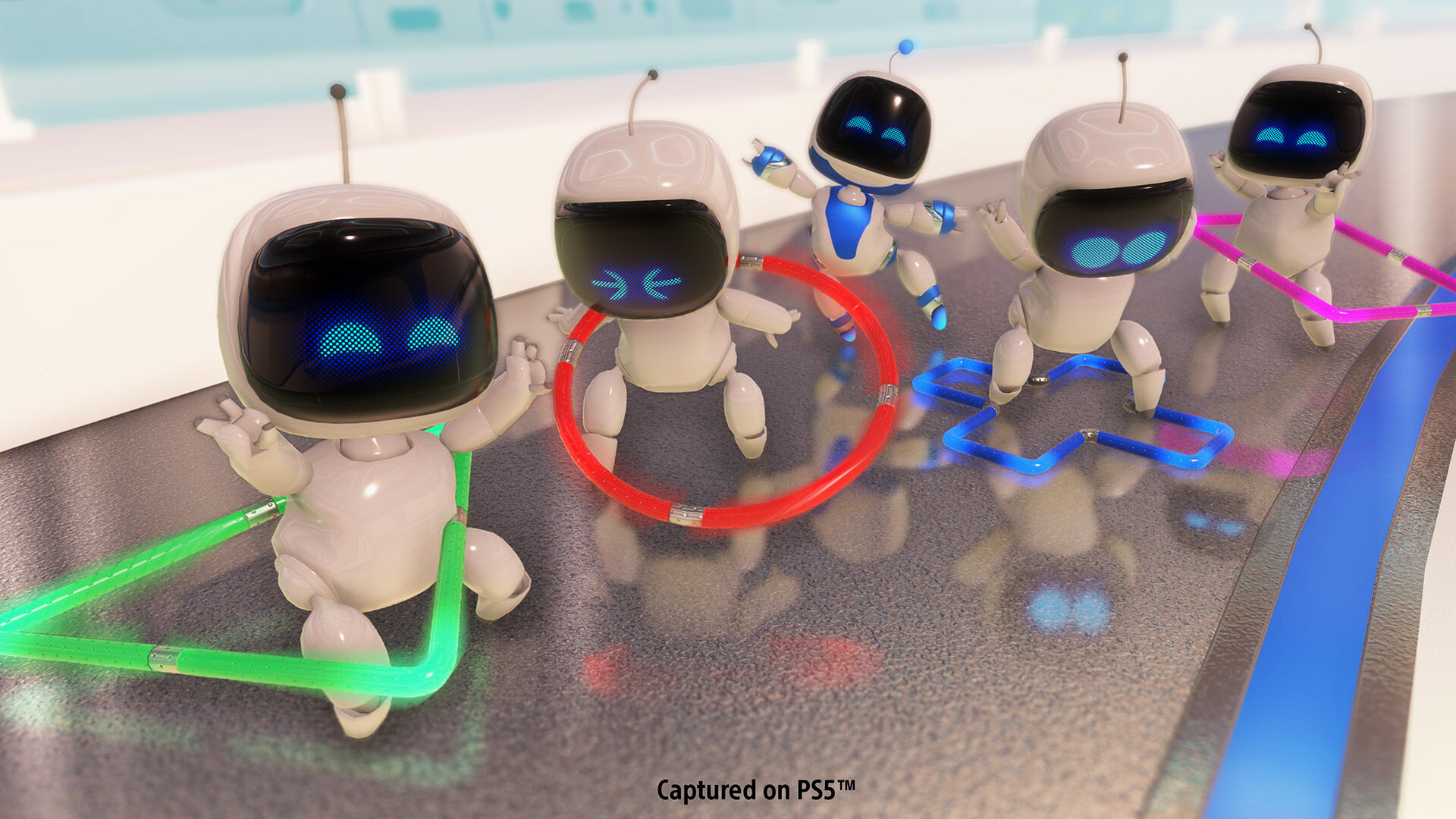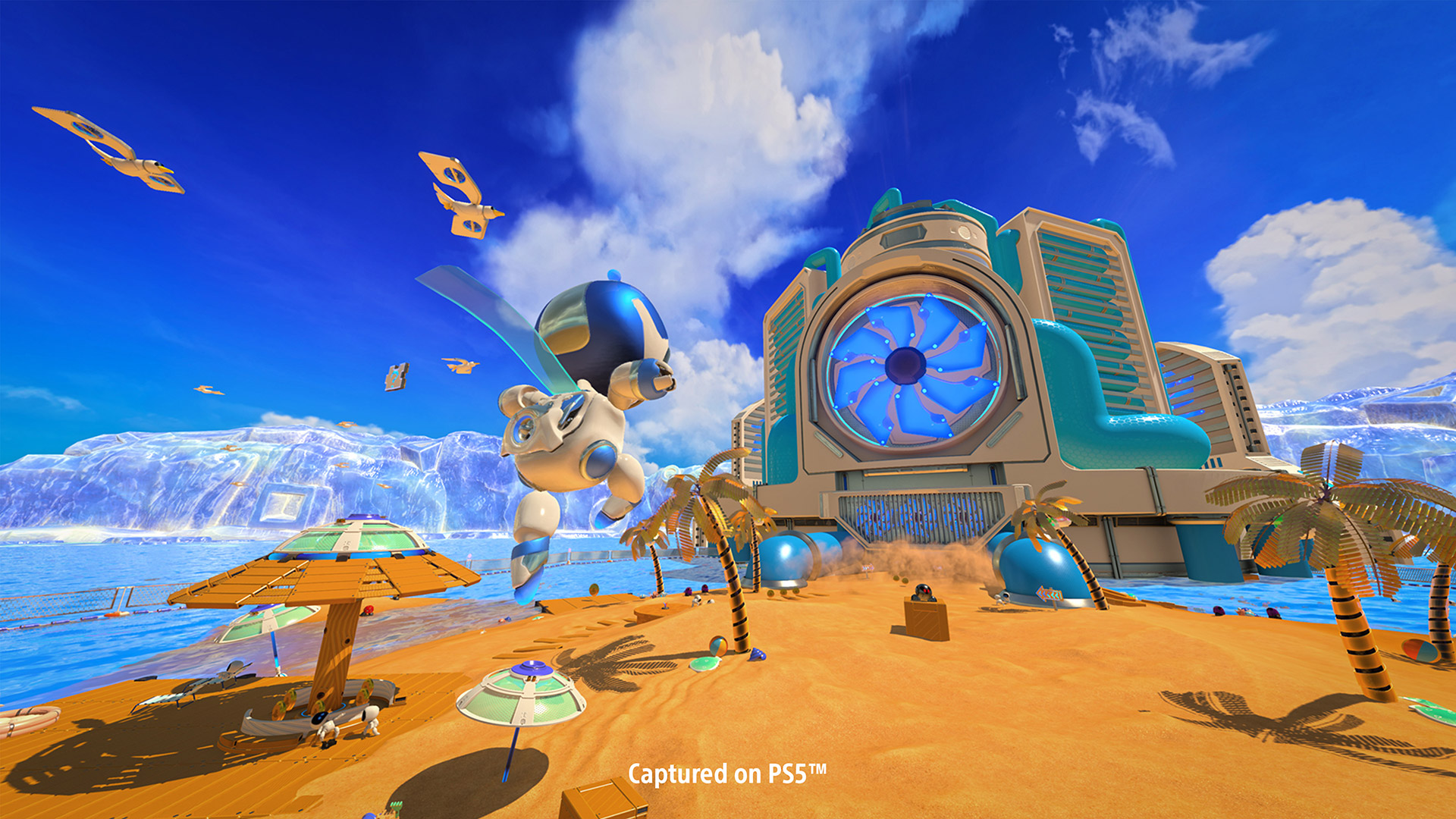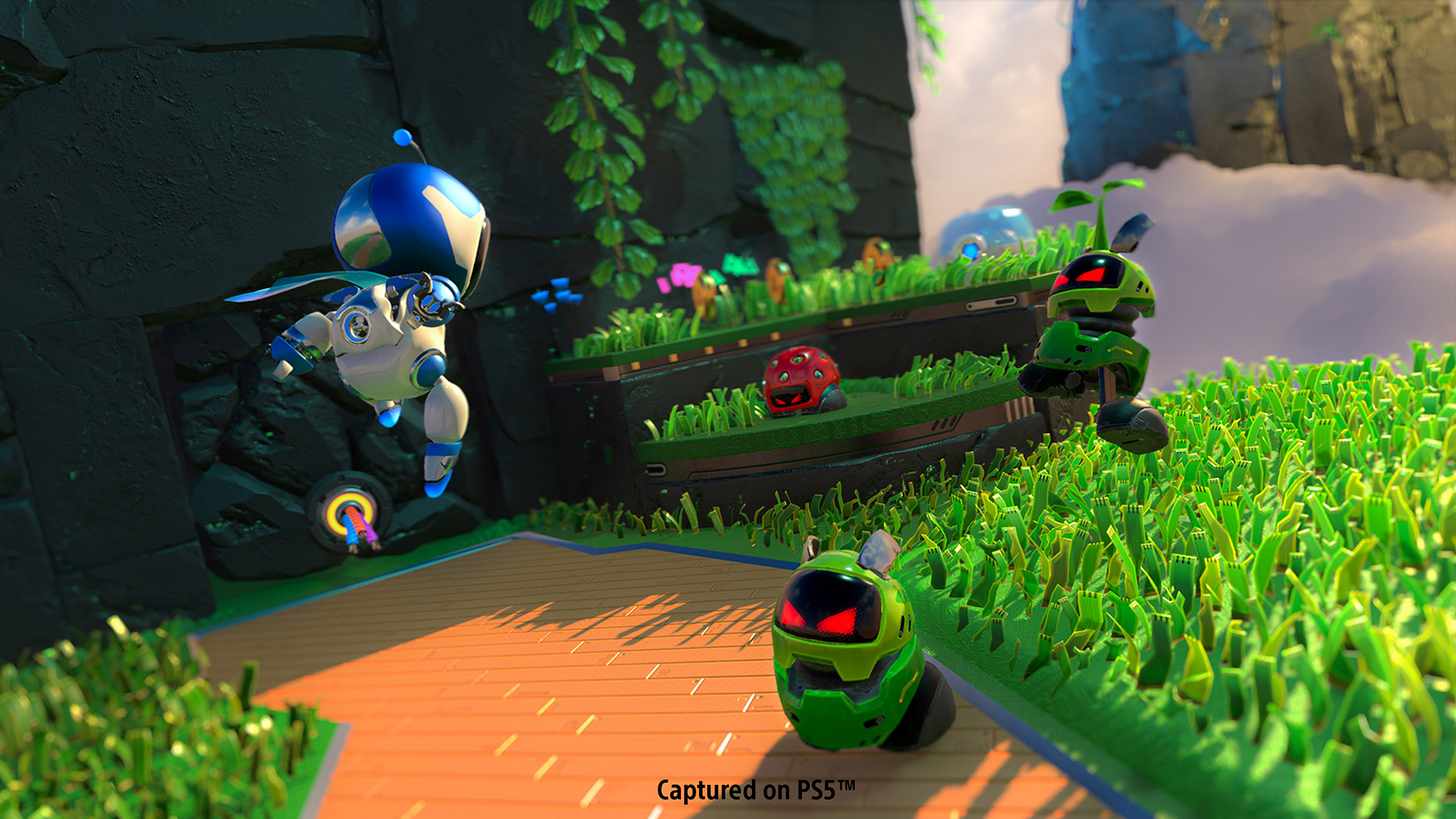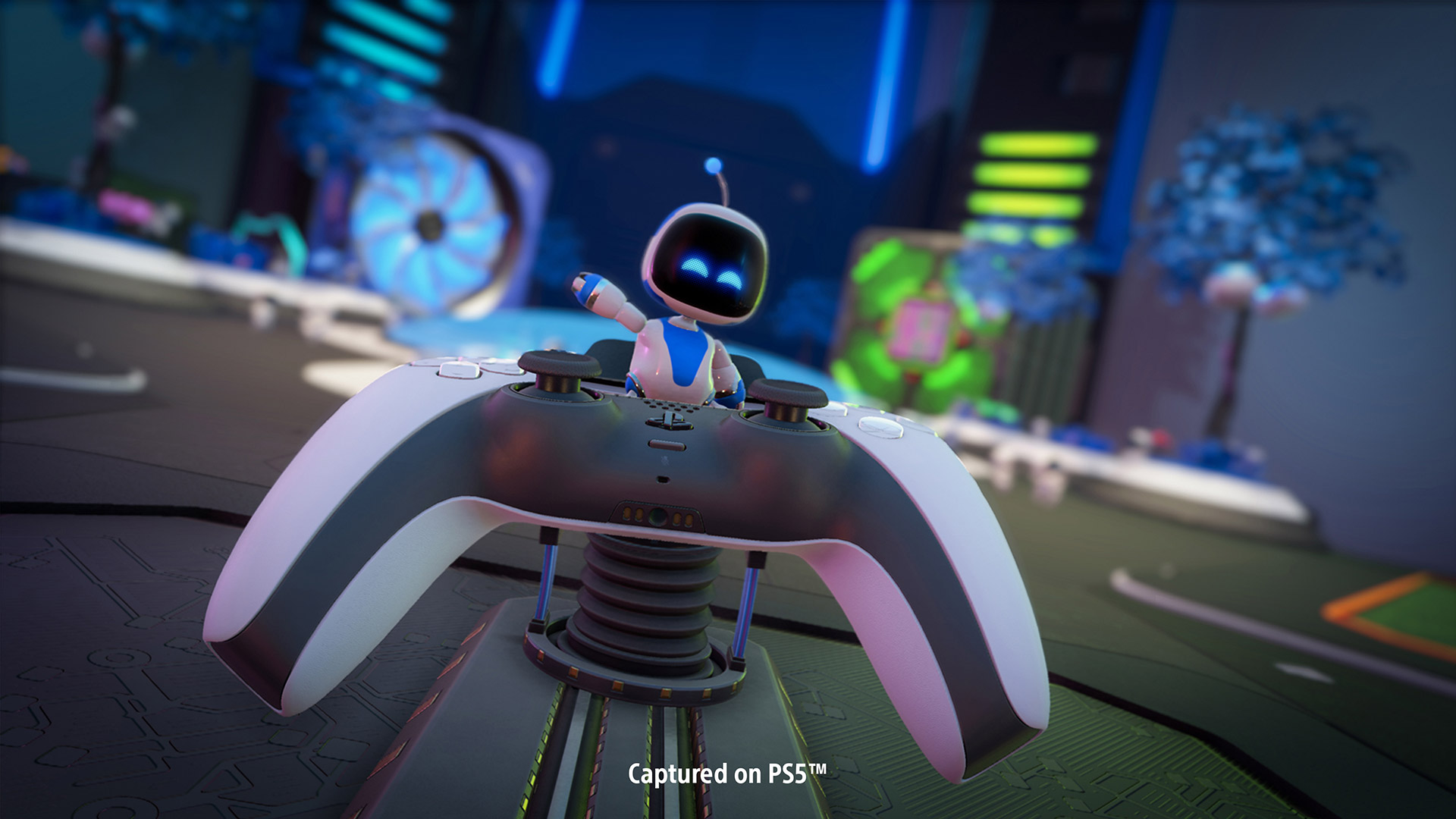Astro’s Playroom Review
In the earlier days of gaming, your shiny new console coming with a free game was the expectation, not the exception. The height of that trend was the 16-bit era, when companies pushed their hardware with top-tier pack-ins like Sonic the Hedgehog on Sega Genesis, Super Mario World on the Super Nintendo, or the utter insanity of Ys Book I & II, Bonk’s Adventure, Bonk’s Revenge, Gate of Thunder, and Bomberman all waiting in the box of the TurboDuo.
Funny, then, that it’d only be one generation later when the idea of bundling consoles with games by default would disappear. Since that point, companies have used pack-in games mostly to add value (and price) to limited-edition console variants, help reignite sagging hardware sales, or showcase new technology to your customers (which Wii Sports did fantastically for the Wii).
It’s that latter reason that Sony has included free digital titles pre-installed on both the PlayStation 4 and soon-to-be-launched PlayStation 5. Last time around, that game was The Playroom, a simple selection of robot-sporting minigames that showed off both the console’s new DualShock 4 controller and the AR capabilities of its camera accessory. This time, those robots return in Astro’s Playroom, a project meant to introduce players to some of the new functions of the PS5 and its DualSense controller.
I don’t think anyone would blame me for going into Astro’s Playroom thinking it would be another The Playroom. While Sony’s Team Asobi struck gold with its bot-based VR platformer Astro Bot Rescue Mission—or, at least, I’ve heard it struck gold, as I’m incapable of using virtual reality headsets without getting nauseated—it made sense to temper expectations for a free pack-in demo versus a fully realized retail release.
Except that, to my surprise and delight, this is far from a simple minigame collection. While it may not be the length of most other platformers out there, clocking in at around three to four hours to see and do everything there is to see and do, Astro’s Playroom definitely is their peer in terms of its gameplay. The game presents players with four worlds to explore that represent the main hardware “components” of the PlayStation5 as a console: its GPU, SSD storage, GDDR6 SDRAM memory, and cooling system. Each world introduces its own unique themes, no only in terms of visuals and environmental design, but also in gameplay. For example, SSD Speedway is a futuristic area where Astro (and the player) must avoid high-speed hovercars and alien hazards. GPU Jungle, meanwhile, plays out amongst more primitive cliff sides and caves to the beat of a song guaranteed to get stuck in your head.
No matter the world, the core gameplay in Astro’s Playroom remains the same. Astro can throw a basic punch, a more powerful spinning charged punch, make regular or jet-propelled jumps, and interact with key environmental objects or accessory items. What makes the game so fantastic, though, is those simpler elements remain fun by continually mixing up what the player is doing. A linear path where clouds try to blow you off course will suddenly open up to a more open area that requires exploration; a section of precision platforming on slippery ice ledges will lead to navigating an ice slab down a rushing river. Astro’s Playroom never keeps players doing the same thing for too long, and those constant shifts make the game feel much longer and more varied than it might otherwise. No section or mechanic ever overstays its welcome, and I was always left wondering what I would be doing (and seeing) next.
Boosting that variety even more are segments of each world that introduce new gameplay gimmicks to show off a specific aspect of the DualSense controller. In one example, Astro hops into a ball, whose direction players control by swiping across the controller’s touch pad; in another, Astro becomes a robotic monkey, whose ability to climb required both tilting the controller left and right using its gyro sensors, and grabbing onto ledges of varying stability with trigger presses either light or strong. Having gone into Astro’s Playroom expecting the entire experience to be those kinds of segments, it was surprising to me to see them be only pieces of the larger game. And, in fact, they might at times be its weaker parts. None of them are bad—though the springy robot wears on my pretty quick—but the fantastic pace of the rest of the game definitely slows down in order to make way for those gameplay shifts.
Even more surprising was that my appreciation for what the DualSense can bring to gaming came not in any of those segments, but instead from something relatively small in the grand scheme of Astro’s Playroom. In the first area of Memory Meadow, there’s a point at which it starts raining, and then that rain turns to hail. While Astro was being pelted by each, I could hear the rain (or ice) falling through the controller’s speaker, and I could “feel” the individual drops via the DualSense’s new rumble technology. For all of the promises Nintendo made for “HD Rumble” on the Switch, I’ve never felt anything like this either on that console or otherwise—and it truly added a new dimension to the game.
Given those showcases of the DualSense’s abilities are only one part of what Astro’s Playroom has to offer, an interesting question then crops up: Is this a good game to serve as an introduction to the PlayStation 5? To be honest, Team Asobi could easily have leaned into those gimmicks a lot harder, even if it would potentially have resulted in a lesser game. And, for players looking for something to show off the power of their new console itself, this definitely isn’t it. Astro’s Playroom looks and sounds great, but never really next-gen great, existing as something that probably could exist on the PlayStation 4 with little compromise.
Well, except when it comes to load times—and that’s where I became most swayed by the potential of the PlayStation 5 (and next-gen consoles period). I’m the type of person who will boot up a game just to play for 15 minutes or so and then quit out, and I’m not sure I’d realized how much load times have dampened my desire to do just that until playing Astro’s Playroom. From my PS5 completely off (not just in standby), I can power up the system, log into my account, cold boot the game, and be playing in 45 seconds. If I’m currently adventuring in one world, and suddenly decide I want to go find a collectible I’m missing in another, hopping between those two totally different sections of the game is an 8-second journey.
The biggest boon the PlayStation 5’s SSD offers Astro’s Playroom is in its surprise stand-out mode: Network Speed Run. Here, eight stages test the player’s ability to get through specifically designed courses as fast as possible, designed around either the basic gameplay of each world, or their four controller-focused gimmicks. If I was surprised at how “real” a game Astro’s Playroom is, I was shocked at how much fun racing through segments of that game for the best possible times could be. Fellow EGM editor Josh Harmon and I ended up fighting back-and-forth for leaderboard placement, and the advantages nearly non-existent load times offer to that experience are immense. At a moment’s notice, I can be in the game trying to win back the top spot in a particular course, and being able to instantly restart after screwing up a run helps avoid breaking that good rhythm I have going.
In the end, though, what convinced me that Astro’s Playroom is the perfect introduction to the PlayStation 5 has nothing to do with technology. Or, should I say, modern technology. Any platformer worth its salt needs collectibles, and Team Asobi has built the game around the history of the PlayStation. It started with me finding a virtual recreation of the PlayStation Portable’s GPS Receiver, and then moved on to discovering things like a PlayStation Move controller and PocketStation. There are tons of nods to the history of Sony’s gaming platform here, from hidden items to re-creations of scenes from classic PlayStation games, spanning across all five generations of the brand. As you find those items, they’ll populate a giant “PlayStation Labo” room, which also becomes filled with other robots involved in activities that provide additional references, along with giant PlayStation-themed murals made from puzzle pieces scattered throughout the game. This trip of nostalgia even extends to the game’s end boss. While I won’t ruin who it is, it’s exactly who I was hoping to see.
Because of this, I found myself legitimately becoming emotional finding all of Astro’s Playroom secrets. No matter your console or company allegiances, it’s easy to forget just how much those 25 years of the PlayStation’s existence as a gaming platform has meant for our hobby. Even better, there are some deep cuts here, a few of which may fly above the heads of most players—although, Team Asobi, I’m afraid I do have to dock you a few points for not including things like the Dual Analog Controller, Analog Flight Stick, Net Yaroze, PlayStation TV, original Sixaxis, Wonderbook, or PSX (the Japan-only digital video recorder, not the first PlayStation under its original codename).
We here at EGM tend to avoid discussing price during reviews, as that typically isn’t a relevant indicator of a game’s true value. And yet, there’s no way I can avoid bringing that topic up here. Had Astro’s Playroom been a $70, or even $40, retail release, I’d argue that that’d be too much for the amount of content it contains. When it’s a free pack-in with the console, however, that whole conversation changes. As an introduction to the PlayStation 5, Astro’s Playroom is fine as a technical showcase, yet fantastic as a passing of the torch from one generation to the next. As a game, devoid of any expectations or duties to perform, and given away for free with every console, it’s a wonderful and enjoyable platformer that punches way above its weight.
Astro's Playroom
Summary: While many may initially see it as a throwaway free demo for the features of the next-generation console it comes installed on, Astro’s Playroom is a wonderful surprise whose price does not speak to its quality. Though it certainly does showcase what the PlayStation 5’s new DualSense can do, the game actually has far more value being just that: a game.
Score: -
Astro's Playroom was reviewed using review code, physical copies, or hardware provided by Sony Interactive Entertainment. Scores are graded on a scale of E (Bad) to S (Special) in homage to Japanese video game grading scales, with the understanding that an S still does not denote a "perfect" score. Scores may have been adjusted from the original source to better fit my personal scale.




